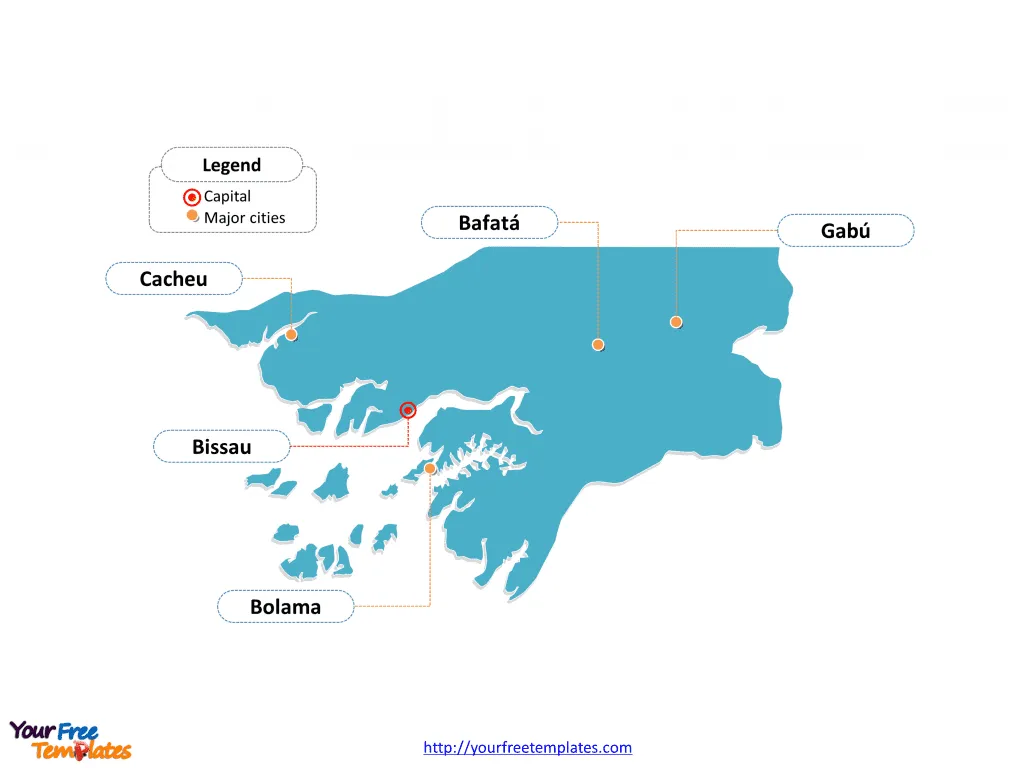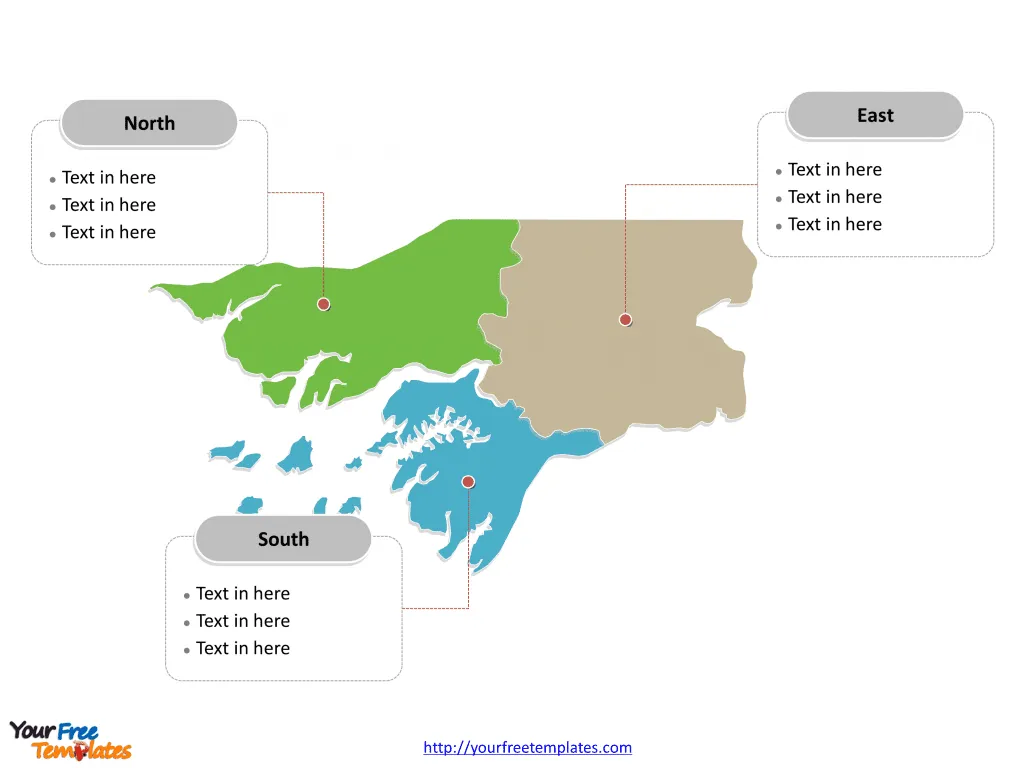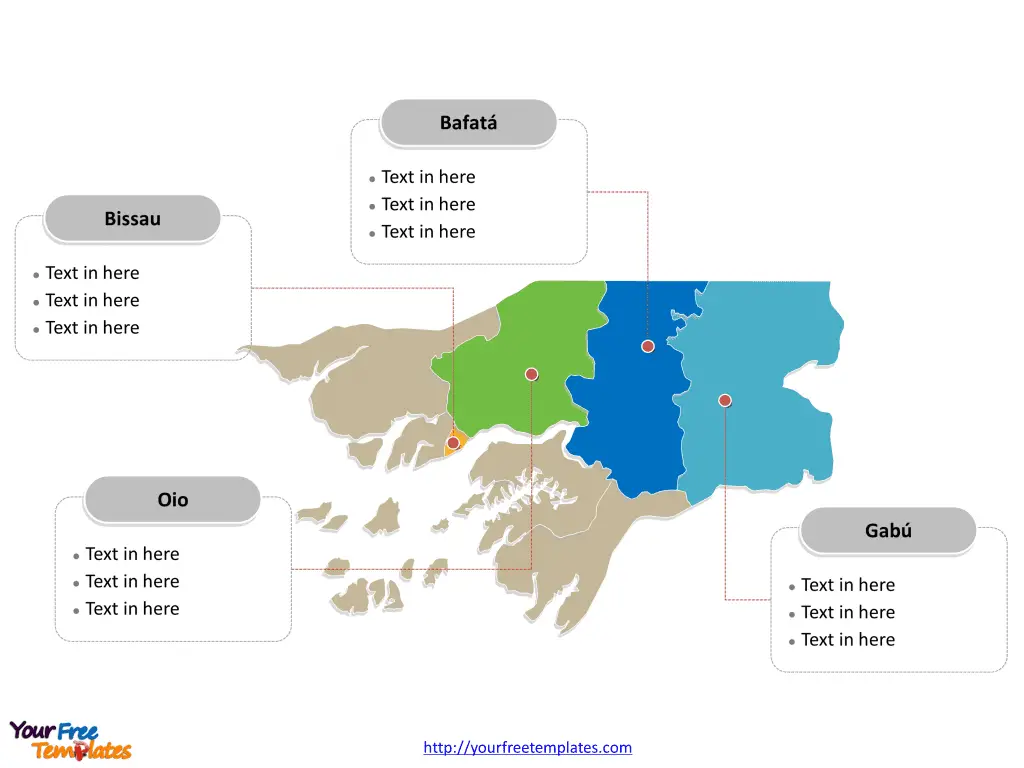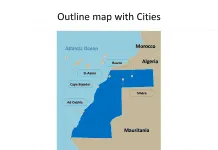The Guinea-Bissau MapTemplate includes three slides. Guinea-Bissau map with 8 regions and 1 autonomous sector, labeling major regions, Bissau, Oio, Gabú, and Bafatá. Guinea-Bissau map labeled with capital and major cities, Bissau, Bafatá, Gabú, Bolama, and Cacheu.
Location Guinea-Bissau is a country located in West Africa. It is bordered by Senegal to the north, Guinea to the south and east, and the Atlantic Ocean to the west.
Population As of my last knowledge update in September 2021, Guinea-Bissau had an estimated population of around 2 million people. The country is home to diverse ethnic groups, including the Balanta, Fula, and Mandinka.
Economy Guinea-Bissau’s economy is largely based on agriculture, with the majority of the population engaged in subsistence farming. The country is known for its cashew nut production, which is a significant contributor to its economy. Fishing also plays a vital role, given the country’s coastal location.
Neighboring Countries Guinea-Bissau shares its borders with Senegal and Guinea. The close proximity to these countries influences trade and cultural exchange, contributing to the region’s dynamics and economic activities.
Slide 1, Guinea-Bissau map labeled with capital and major cities.
Bissau is the capital and largest city of Guinea Bissau, other major cities including Bafatá, Gabú, Bolama, and Cacheu.
Bissau
Bissau serves as the capital and largest city of Guinea-Bissau. It is an essential center for government, commerce, and cultural activities, playing a pivotal role in the country’s political landscape.

Bafatá
Bafatá is one of the major cities in Guinea-Bissau, serving as an important hub in the Bafatá region. The city contributes to the region’s economic and cultural vibrancy.
Gabú
Gabú is another significant city in Guinea-Bissau, known for its cultural heritage and historical significance. It is an essential center for trade and community life in the Gabú region.
Bolama
Bolama, located in the Bolama region, is a city with a rich colonial history. It was once an important center during the colonial era and continues to hold cultural and historical significance.
Cacheu
Cacheu is a major city in Guinea-Bissau, situated in the Cacheu region. The city has historical importance, particularly due to its role in the country’s past as a center for slave trade.
Slide 2, Guinea-Bissau map labeled with provinces.
Guinea-Bissau is a country divided into 3 provinces; they are Leste (East), Norte (North), and Sul (South). Every individual political subdivision is an editable shape.

Slide 3, Guinea-Bissau map labeled with major regions.
Guinea-Bissau map shows the country divided into 8 regions and 1 autonomous sector; they are Bafatá, Biombo, Bissau, Bolama, Cacheu, Gabú, Oio, Quinara, and Tombalí. Every individual political subdivision is an editable shape.
Bissau
Bissau is not only the capital city but also a significant region in Guinea-Bissau. It serves as a political, economic, and cultural center, influencing the country’s governance and societal dynamics.

Oio
The Oio region, with cities like Bissorã and Mansôa, is known for its agricultural significance and cultural diversity. It plays a crucial role in the country’s agricultural economy.
Gabú
The Gabú region, with the city of Gabú, is characterized by its unique cultural heritage and historical landmarks. It is an important center for trade and community life in Guinea-Bissau.
Bafatá
Bafatá region, with the city of Bafatá, is known for its diverse communities and cultural traditions. The region contributes to the country’s social and economic fabric.
Guinea-Bissau’s major cities and regions each contribute uniquely to the country’s cultural, economic, and historical landscape, making them integral to the nation’s identity and development.
Looking for Premium maps, please visit our affiliate site: https://editablemaps.com/ or https://ofomaps.com/
Size:115K
Type: PPTX
Aspect Ratio: Standard 4:3
Click the blue button to download it.
Download the 4:3 Template
Aspect Ratio: Widescreen 16:9
Click the green button to download it.
Download the 16:9 Template














